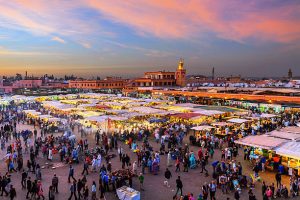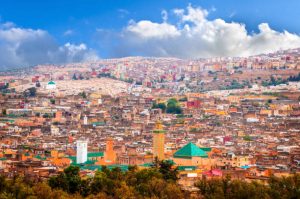When Is The Best Time To Visit Morocco?
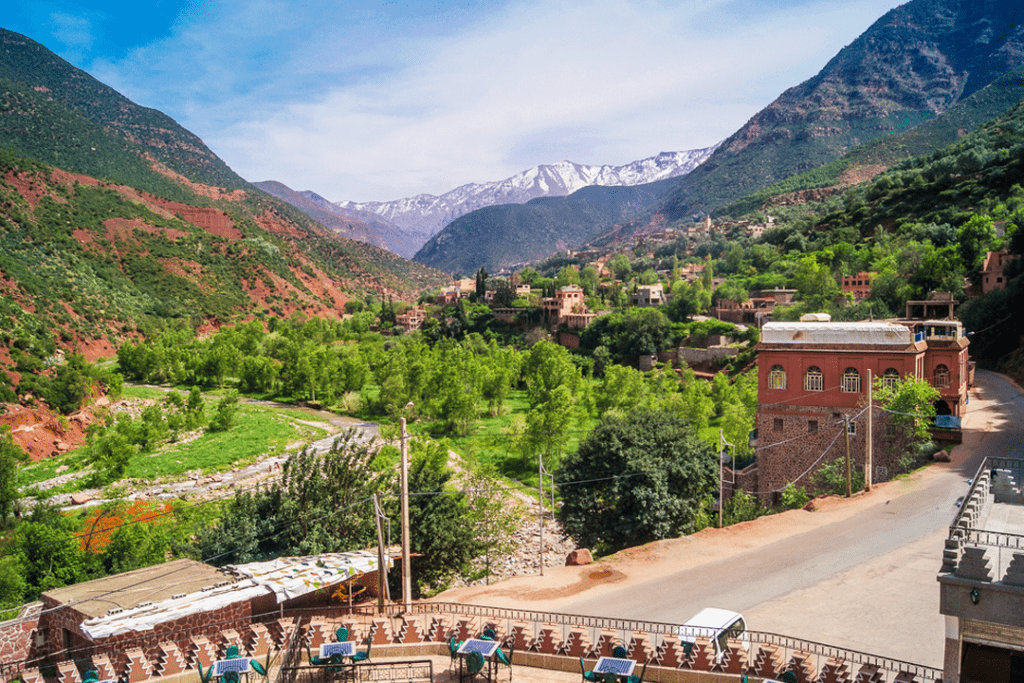
The best time to visit Morocco:
The best time to visit Morocco depends on personal preference and the specific region being visited. Generally, the period from September to May is considered the best time to visit, as temperatures are mild and comfortable in most parts of the country. The coastal cities have a milder climate year-round, while the interior regions can get hot in the summer months.
If you’re interested in visiting the Sahara Desert, the best time is from October to April when temperatures are milder. If you’re interested in visiting the ski resorts in the Atlas Mountains, the ski season runs from January to March. These months have mild temperatures, fewer tourists, and good weather for outdoor activities. If you’re looking to spend time at the beach, the summer months (June to August) are ideal, with warm weather and long days. Winter (December to February) can be cool, but it’s a great time to visit the desert and see the snow-capped Atlas Mountains.
The best time to visit Morocco is Autumn (September-November) or early spring (March-April). The weather is warm, but you will avoid the extreme temperatures of the scorching heat and cold nights. Whatever time of year you choose to visit, there’s something special about Morocco.
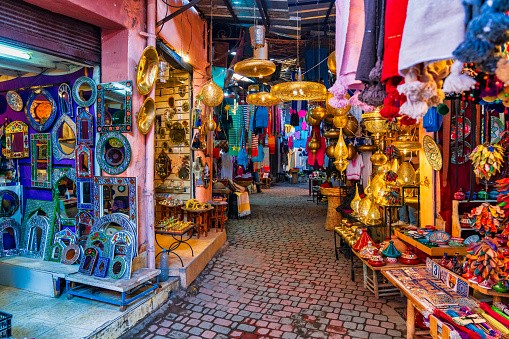
Weather In Morocco:
The weather in Morocco varies depending on the region and time of year. Coastal areas have a Mediterranean climate with mild, wet winters and hot, dry summers. Inland, the climate becomes more arid and temperatures can become extreme, especially in the desert regions.
The spring (March to May) is generally mild and pleasant, with temperatures ranging from 15 to 25°C.
The autumn (September to November) is also a good time to visit, with similarly mild temperatures.
During the summer (June to August), temperatures along the coast can reach up to 35°C, while inland temperatures can be even higher.
In the winter (December to February), temperatures can drop to 10°C or below in some parts of the country, with occasional rain or snow in the mountains. The desert regions can experience cool to mild temperatures during the day, but nighttime temperatures can drop significantly.
Morocco has a Mediterranean climate along the coast, with mild, wet winters and hot, dry summers. Inland, the climate is more arid and desert-like, with hot summers and cool winters. The Atlas Mountains have a mountain climate, with cool summers and cold, snowy winters. The country also experiences occasional heat waves and dust storms, particularly in the desert regions. The coastal city of Tangier, for example, has average temperatures of 20-25°C (68-77°F) in the summer and 13-18°C (55-64°F) in the winter. In Marrakesh, temperatures are typically 30-35°C (86-95°F) in the summer and 10-15°C (50-59°F) in the winter.

Four seasons of Morocco: When Is The Best Time To Visit Morocco?
Spring in Morocco (March to May)
Spring in Morocco, which occurs from March to May, is a popular time to visit the country due to its mild temperatures and fewer crowds compared to the summer months. During this time, temperatures range from 20-25°C (68-77°F) in coastal cities and 15-20°C (59-68°F) in the interior. The spring is also a great time to see the countryside in bloom, with fields of wildflowers and blooming trees. Outdoor activities such as hiking, trekking, and exploring the cities are also popular during the spring months, as the weather is not too hot and not too cold. Overall, spring in Morocco is a pleasant time to visit, with good weather and a relaxed atmosphere.
The days are sunny and pleasant, making it a great time for outdoor activities such as hiking, exploring the cities, and visiting the beaches. The landscape is also at its most vibrant in spring, with flowers blooming and the countryside green. There are also many cultural events and festivals taking place during this season, including the International Film Festival in Marrakesh and the International Music Festival in Fes. Overall, spring is a great time to visit Morocco for its ideal weather, vibrant atmosphere, and cultural offerings.
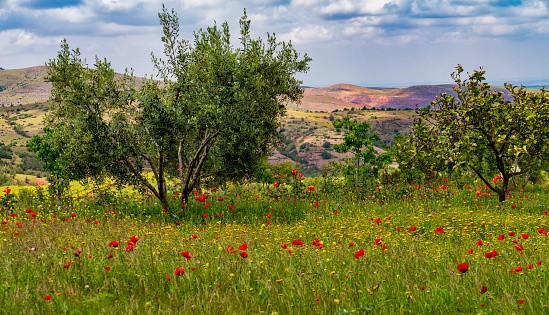
Summer in Morocco (June to August)
Summer in Morocco lasts from June to August and is characterized by warm to hot temperatures and long, sunny days. Coastal areas can be especially hot, with temperatures reaching as high as 40°C (104°F). Inland regions such as Marrakesh can also experience high temperatures, typically around 35°C (95°F). Despite the heat, summer is a popular time to visit Morocco, particularly for those looking to enjoy the beaches, swim in the Mediterranean or the Atlantic Ocean, and participate in water sports.
In addition to beach activities, summer is also a great time for cultural experiences, with many festivals and events taking place throughout the country, including the Marrakesh Popular Arts Festival and the Essaouira Gnawa Festival. Summer can also be a busy time for tourists, so it’s best to book accommodations and activities in advance. Despite the heat, summer in Morocco offers a unique mix of outdoor adventures and cultural experiences, making it an attractive time to visit the country.
This is the perfect time for beach holidays and water sports, as the long sunny days and warm waters make for ideal conditions. Coastal resorts and cities such as Agadir, Essaouira, and Asilah are popular destinations during this time.
However, it’s also important to note that the heat can be intense, especially in the desert regions, so it’s important to stay hydrated and avoid outdoor activities during the hottest parts of the day. If you’re planning to travel to the mountains, the temperature will be cooler, making it a good escape from the heat. Summer is also the peak tourist season, so it’s recommended to book accommodations in advance to ensure availability.
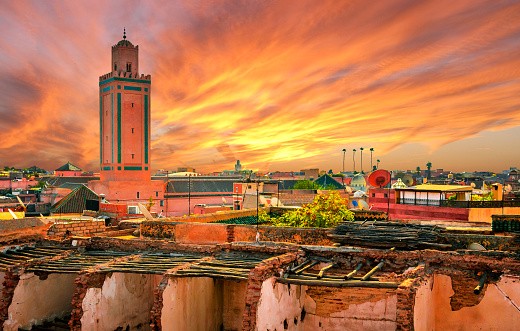
Autumn in Morocco (September to November)
Autumn in Morocco, which lasts from September to November, is a great time to visit the country as the weather is mild and pleasant. Temperatures range from 15°C to 25°C (59°F to 77°F), making it ideal for outdoor activities such as exploring the cities, hiking, and visiting cultural attractions. The crowds have thinned out compared to the summer, making it a quieter time to visit popular tourist destinations.
The countryside is also at its most picturesque in autumn, with the fields turning golden and the harvest season in full swing. This is a great time to visit rural areas, sample local cuisine, and see traditional agriculture practices. Additionally, the cultural calendar is still lively with several festivals and events taking place throughout the country, including the annual Marrakesh International Film Festival and the Essaouira Gnaoua World Music Festival. Overall, autumn is a great time to visit Morocco for its mild weather, beautiful landscapes, and cultural events.
This is a great time for outdoor activities, such as hiking, exploring the cities, and visiting the countryside. The landscape is still lush and green, and the skies are often clear and sunny, making it a great time for photography.
This is also a quieter time for tourism, with fewer crowds and lower prices than during the peak summer months. There are also many cultural events and festivals taking place during this season, including the Marrakesh International Film Festival and the International Music Festival in Fes. Autumn is a great time to visit Morocco for its ideal weather, vibrant atmosphere, and cultural offerings.

Winter in Morocco (December to February)
Winter in Morocco lasts from December to February and is characterized by cool and sometimes rainy weather, with temperatures ranging from 10°C to 20°C (50°F to 68°F) in most regions. This is a great time to visit the country’s deserts and the Atlas Mountains, where snow is possible and the scenery is dramatic. The cities, particularly Marrakesh, can be cool and misty, but still offer plenty of opportunities to explore and experience the local culture.
Winter is a quieter time for tourism, with fewer crowds and lower prices, making it a good time to explore the country’s cultural and historical sites. This is also the time for many religious and cultural events, including the Marrakesh International Film Festival and the Mawazine Music Festival in Rabat. Winter is a great and the best time to visit Morocco for those looking for a more low-key experience and those interested in cultural activities.
The weather can be unpredictable during this time, with occasional rain and cloudy days, but it’s also a great time to visit the desert regions where the weather is usually sunny and dry. The Atlas Mountains are also a popular destination during the winter, as the snow-capped peaks provide a beautiful contrast to the surrounding landscape.
This is a quieter time for your Morocco Travel, with fewer crowds and lower prices compared to the summer months. Winter is also a great time for cultural activities, such as visiting the markets, museums, and historical sites, as well as attending music and cultural events. If you’re planning to visit Morocco during the winter, it’s important to pack warm clothing and be prepared for cooler temperatures, especially in the evenings.

When should I visit the desert of Morocco?
Probably autumn (September–November) or early spring (March-early April). The best time to visit the desert of Morocco is during the months of October to April when temperatures are mild and there is less chance of rain. This time period also offers the opportunity to witness the beautiful blooming of desert wildflowers. During the summer months, temperatures can reach extreme levels, making it difficult to explore the desert comfortably. This is also the peak tourist season, so it is recommended to plan and book in advance. If you prefer to experience the desert in the summer, you can visit from June to September when temperatures are hot, but you can also enjoy traditional desert festivals and activities.
During the cooler months. During this time, temperatures are mild, making it easier to explore the desert and participate in outdoor activities such as camping and camel trekking. The summer months can be extremely hot, making it less enjoyable to spend time in the desert.

When should I visit Marrakech, Morocco?
The best time to visit Marrakech, Morocco is from September to June, when temperatures are mild to warm. During this period, the weather is generally comfortable for sightseeing and exploring the city’s attractions. The peak tourist season is from mid-December to mid-January, when the weather is cool and dry. The summer months (July and August) can be very hot and crowded, making it less pleasant to be outdoors for extended periods of time.
The best time to visit Marrakech, Morocco is between October and April, during the cooler months. During this time, temperatures are mild and comfortable, making it easier to explore the city and its sights, such as the historic medina, palaces, and gardens. The summer months can be extremely hot, which may make it more difficult to enjoy outdoor activities. Additionally, peak tourist season in Marrakech is typically in the spring and fall, which may mean larger crowds and higher prices.
Weather in Marrakech:
Marrakech, Morocco has a hot semi-arid climate with hot summers and mild winters.
In summer (June to September), temperatures can reach up to 40°C (104°F) during the day and drop to around 20°C (68°F) at night. This can make it very hot and uncomfortable for outdoor activities. The weather is predominantly sunny with little to no rain. It is important to keep in mind that temperatures can vary greatly between day and night, especially in the desert areas surrounding Marrakech. It is also advised to bring appropriate clothing and protection from the sun, especially during the hot summer months.
In winter (December to February), temperatures during the day are usually around 20°C (68°F) and drop to around 5°C (41°F) at night. This is the most pleasant time of the year to visit Marrakech, with mild temperatures making it easier to explore the Marrakech city. The weather is usually sunny, with some occasional rain. Winter in Marrakech is considered a pleasant time to visit, with mild temperatures that make it ideal for outdoor activities such as exploring the city’s historical sites and markets, as well as its nearby countryside and mountains. It is still recommended to bring layers, as temperatures can vary greatly between day and night.
Rain is rare in Marrakech, with the majority of precipitation falling in the form of brief showers in winter. Overall, Marrakech experiences low rainfall throughout the year.

Book your Morocco Tour now with us:
Fascinated by all these amazing and best time to visit in Marrakech on our Morocco Travel Guide? Shortlist your favorite ones from this amazing list and add them to your itinerary before you book your Morocco Tour From Marrakech! Book your trip to Morocco with Lovely Morocco Tours and have a smooth and hassle-free experience. Have a great vacation in Morocco!
